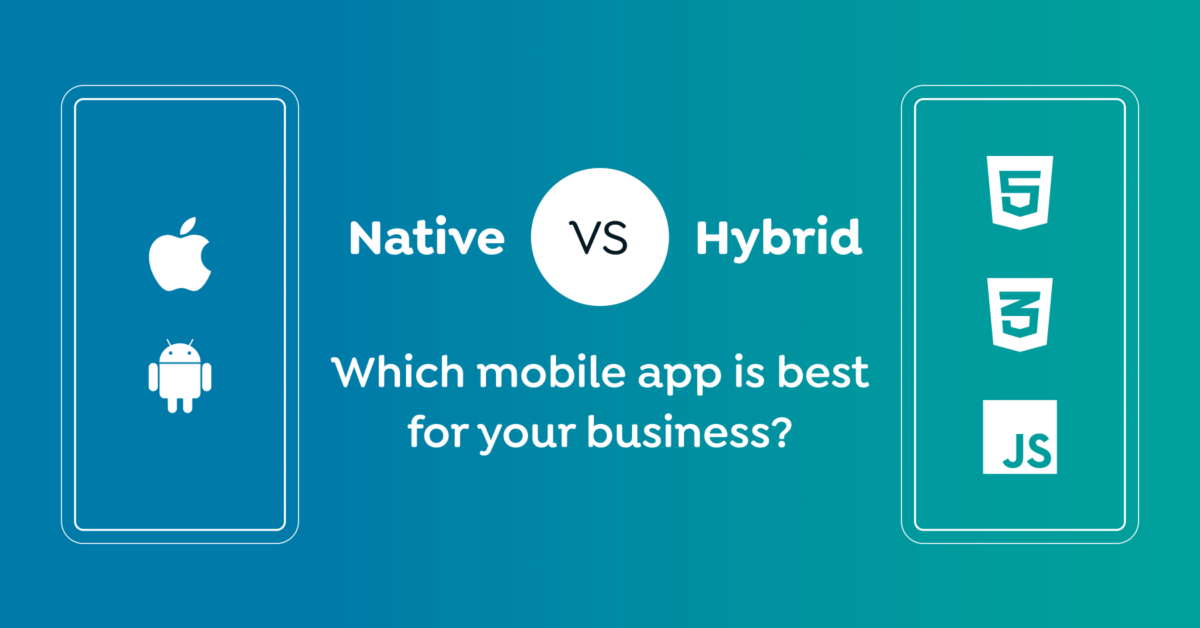When it comes to mobile app development, businesses often find themselves at a crossroads between hybrid apps and native apps. Understanding the fundamental differences between these two approaches is essential before making a decision.
Native apps are designed and developed for a specific operating system (e.g., iOS or Android only) using platform-specific languages like Swift or Java. Their key strength lies in their performance—offering seamless integration with the device’s hardware and system functionalities. However, this exclusivity comes at a cost: building separate apps for each platform can be time-consuming and expensive.
Hybrid apps, on the other hand, bridge the gap between web apps and native apps. Built with web technologies like HTML, CSS, and JavaScript, these apps are encapsulated in a native container, enabling them to run seamlessly across various platforms. In essence, hybrid apps offer a blend of the flexibility of web apps with the functional advantages of native apps. This dual nature brings several advantages.
Cost-Effectiveness
One of the key benefits of hybrid apps is their cost-efficiency. With a single codebase, businesses can avoid the financial burden of creating separate native apps for different platforms. This unified approach saves not only on development costs but also on future updates and maintenance, as changes are rolled out across all platforms simultaneously.
Faster Development
The fast-paced world of mobile technology demands quick solutions. Hybrid apps offer a significant advantage here—developers can build and deploy them more swiftly compared to native apps. Updates can be pushed live without the wait for app store approvals, ensuring faster implementation. This real-time adaptability ensures users always have access to the latest features and improvements.
Broader Reach
In today’s diversified tech ecosystem, users interact with multiple devices and operating systems. Hybrid apps are inherently adaptable, and capable of running on both iOS and Android without the need for separate versions. This wider reach is invaluable for businesses seeking to engage with as broad an audience as possible.
Unified User Experience
Although web apps are convenient, they often fall short in terms of user experience. Hybrid apps, however, offer a more cohesive and native-like experience. They can tap into device functionalities such as the camera, GPS, and notifications, providing users with a richer interaction that feels natural across different platforms.
Offline Functionality
One of the standout features of hybrid apps is their ability to function even with limited or no internet connectivity. This capability ensures users can continue accessing content and using core features offline—an increasingly essential requirement in today’s app ecosystem.

Why the Trend is Growing
Several compelling factors explain the rising popularity of hybrid app development.
Increased Demand for Mobile Apps
Mobile devices are now an integral part of daily life, and businesses have recognised the importance of mobile apps as a medium to engage customers. As the demand for mobile solutions grows, hybrid apps present an efficient and flexible way to enter the market, catering to diverse customer bases without the overheads of maintaining multiple native apps.
Technological Advancements
Frameworks like React Native and Flutter have revolutionised hybrid app development, making it possible to build high-performance apps that rival native ones. These tools allow developers to create apps with near-native functionality and user experience, further enhancing the appeal of hybrid solutions.
Cost Considerations
For startups and small businesses, the decision to go hybrid often hinges on cost. The ability to develop a single app that operates across platforms, without sacrificing quality, represents a considerable saving. As budgets tighten, hybrid apps offer a viable alternative to more expensive native development.
Time-to-Market
In a fast-moving business landscape, getting a product to market quickly is critical. Hybrid apps allow businesses to launch faster by streamlining the development process. This speed not only helps businesses stay competitive but also provides the flexibility to respond to user feedback and market trends in real-time.
Developer Skillsets
With a large pool of developers already proficient in web technologies, transitioning to hybrid app development is straightforward. This availability of talent has driven the adoption of hybrid apps as businesses can quickly find skilled developers to build and maintain their apps.
Real-World Examples
Many of today’s most successful companies have adopted hybrid apps. For example, Airbnb and Instagram rely on React Native to deliver seamless experiences across platforms. Similarly, Aecor’s Medising app, built using Flutter, leverages the hybrid model to offer users a consistent, cross-platform experience while maintaining high performance.
The Pros and Cons of Native Apps vs Hybrid Apps
Native Apps: Advantages
Native apps have a strong advantage in terms of performance. Since they are specifically built for a particular platform, they can fully exploit the device’s hardware, ensuring smooth operation and quick response times. This direct access to device features, such as cameras and GPS, also allows native apps to provide a richer user experience. Additionally, native apps function offline, which can be crucial for users in areas with limited internet connectivity.
Another key benefit of native apps is their user interface. Because they are designed with the platform’s specific design guidelines in mind, native apps often offer a more intuitive and engaging interface tailored to the device.
Native Apps: Disadvantages
However, native apps come with several drawbacks. First, the development costs can be significantly higher. Each platform requires a different set of skills, languages, and tools, leading to longer development times and higher expenses. Furthermore, maintaining a native app involves frequent updates to ensure compatibility with the latest operating systems, further driving up costs.
Conclusion
Hybrid app development presents an attractive option for businesses looking to balance cost, development speed, and user experience. By combining the advantages of both web and native apps, hybrid apps allow businesses to engage with a broad audience without the need for costly, separate development processes. As the demand for mobile solutions grows and technology continues to evolve, hybrid app development is likely to remain a crucial strategy for businesses looking to stay competitive in the digital landscape.
If you would like to learn more or have any inquiries, don’t hesitate to get in touch with us.







